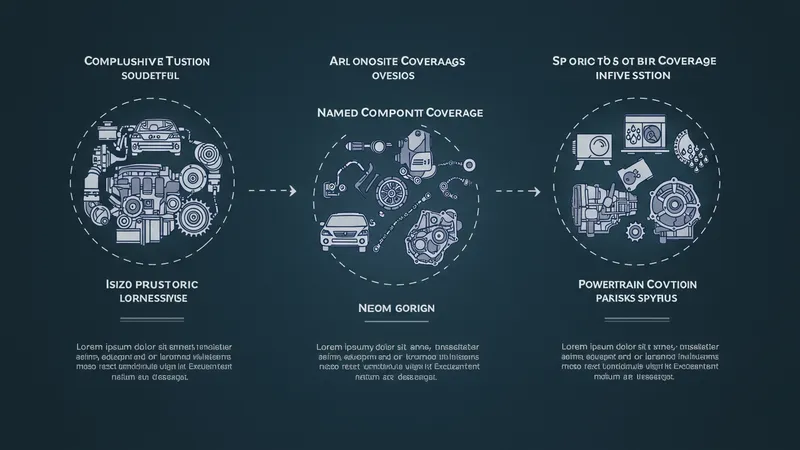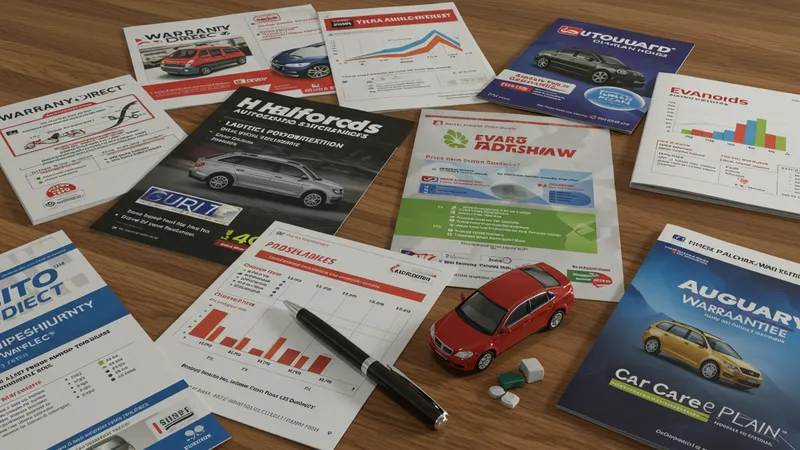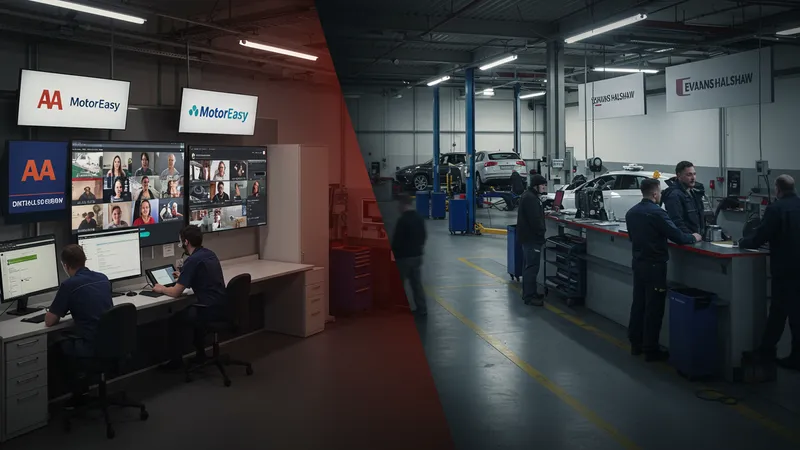

Vehicle warranty options refer to a range of protection plans that car owners in the United Kingdom can choose from to cover the cost of repairs and replacement parts should their vehicle suffer mechanical or electrical failure. These options offer drivers peace of mind against unexpected expenses after the manufacturer's initial warranty expires. Different plans come with varying lengths, coverage details, limits, and pricing, making it essential for vehicle owners to understand the key features before making a choice.
When evaluating vehicle warranty options in the UK, it's important to consider not only the extent of cover but also aspects such as claim processes, included parts, service provider reputation, and how well the policy matches your particular car’s age and mileage. Each warranty provider structures their offerings uniquely, with some focusing on comprehensive protection and others specialising in more basic cover. Below are the top 10 vehicle warranty options, each recognised for specific strengths and suitability for drivers throughout the UK.

Each of these options addresses a different vehicle owner profile. For example, Warranty Direct is known for its comprehensive component cover, making it suitable for drivers seeking minimal exclusions, while RAC Car Warranty provides varied tiered options suiting a wide budget range. Pricing varies based on vehicle make, mileage, and contract length, so careful comparison is required to find the best value for individual circumstances.
The value of choosing a vehicle warranty often comes down to the risk tolerance of the driver and the reliability of their vehicle make. For higher-mileage or older vehicles, warranties such as those from MotorEasy and Car Care Plan offer additional peace of mind by including wear and tear cover, which is not standard across all providers. On the other hand, some plans prioritise lower upfront costs and only cover essential breakdowns, appealing to those with newer cars or lower usage.
It’s also worth considering who underwrites the plan. Warranties backed by major dealers, such as Evans Halshaw and Close Motor Warranty, can deliver greater accessibility for claims and servicing within their network, which may be more convenient for frequent drivers. Meanwhile, trusted names like AA and RAC are favoured for their established customer service and roadside support features that go beyond the policy itself.
Current trends in the United Kingdom also show increased interest in digital-first providers, like MotorEasy, that manage claims and administration online—streamlining the process for a tech-savvy generation. However, regardless of provider, all warranties require careful reading of terms, especially on exclusions and service conditions.
By understanding the nuances between these top vehicle warranty options and how they align with the specific needs of UK motorists, drivers can make informed choices that provide genuine reassurance. The deeper details reveal even more valuable insights ahead, such as what sets comprehensive cover apart and how claims processes compare—insights that can help you feel confident about your vehicle’s protection.
Understanding the range of coverage types within vehicle warranty options is crucial for car owners in the United Kingdom. The most common forms are comprehensive, named component, and basic powertrain cover. Comprehensive plans—such as those offered by Warranty Direct and MotorEasy—cover a broad set of failures, giving drivers protection from complex mechanical and electrical breakdowns across almost all vehicle systems. Conversely, named component policies, which might be found under Carwise Warranty or Halfords Autocentres Warranty, explicitly list the parts and systems covered, leaving everything else as exclusions. Powertrain warranties, often the most budget-friendly, restrict protection mostly to major components like the engine and transmission, and are found in select dealer-backed plans.

Drivers comparing these options should also consider exclusions and add-ons. Some UK policies allow customisation, offering air conditioning, infotainment systems, or MOT test cover as payable extras. RAC Car Warranty is notable for letting drivers tailor their plan, adding or removing features to suit their budget and anticipated repair needs. Such flexibility can help owners avoid unnecessary expense while still receiving meaningful protection.
Wear and tear cover is a significant differentiator. While not universal, it is increasingly sought after—especially as the average age of vehicles on UK roads climbs. MotorEasy and Car Care Plan offer protection specifically for components prone to age-related failure, a feature that may be vital for those driving older vehicles daily. Meanwhile, entry-level plans tend to exclude such failures, focusing only on sudden, unexpected faults rather than gradual deterioration.
Another aspect to consider is the scope of roadside assistance and breakdown support. Some warranties folded into larger service packages, like those from the AA and RAC, include access to their national recovery fleets and 24/7 emergency call-outs, while others strictly reimburse repair costs. This can be a decisive factor for motorists who frequently travel long distances or rely on their car for daily commutes.
Pricing for vehicle warranty options in the United Kingdom varies widely based on car age, mileage, make, and the chosen provider. For instance, a one-year comprehensive plan from Warranty Direct for a mid-range family vehicle might fall between £350 and £450, while basic coverage from Halfords Autocentres could cost as little as £200. Dealers like Evans Halshaw may set their own rates within the £250–£400 bracket, often reflecting the value and expected reliability of the cars sold on their forecourts.

Most UK warranty providers also set annual claim limits—either per claim event, per year, or as a cap on total payouts. This means that drivers should compare not only the headline price but also what maximum level of financial protection is realistically available. For example, Autoguard Warranties might advertise low entry costs but apply a fixed upper payout, while Car Care Plan may offer unlimited claims within reasonable costs related to vehicle market value.
The value perception of a vehicle warranty is also shaped by inclusions like diagnostics, labour, and VAT on repairs. Some policies—commonly from MotorEasy and AA Warranty—ensure these expenses are incorporated, helping owners avoid unexpected additional costs at the garage. In contrast, lower-cost alternatives may only partially reimburse or exclude certain elements, requiring drivers to foot part of the bill themselves.
The UK’s regulatory environment ensures all major providers on the list are Financial Conduct Authority (FCA)-regulated. This safeguards buyers by enforcing transparency and fairness in contract terms. As a best practice, drivers should always request a full schedule of cover and compare sample claim scenarios before making a commitment to any warranty option.
The claims process is a defining feature of the UK vehicle warranty landscape. Providers like the AA and MotorEasy have invested in digital portals and dedicated helplines to streamline initiation and tracking, while traditional dealers such as Evans Halshaw still rely on in-branch visits for claims approval. Ease and speed of response can make a critical difference, especially for daily-use vehicles where downtime is costly.

Customer service ratings often reflect the quality of claims handling and service delivery. Warranty Direct and RAC maintain positive reputations thanks to straightforward forms, quick decision times, and clear communication throughout repairs. Prospective customers should research online reviews and ratings as these provide real insights into common points of satisfaction or frustration.
UK-specific factors, such as MOT testing requirements and the prevalence of used cars, influence how warranties are structured and what extras are offered. Some warranties, particularly from Car Care Plan and Halfords Autocentres, include MOT protection—covering costs if your vehicle fails its annual inspection. Local dealer-backed plans may also offer supplementary perks like courtesy cars or free servicing during the warranty period, enhancing perceived value for drivers.
Another vital consideration: vehicle modifications and past service history. UK warranty providers typically exclude claims arising from improper maintenance or unauthorised modifications, so keeping complete service records is essential. Transparency and honesty in policy declarations ensure smoother claims, reducing the risk of disputes down the road.
The vehicle warranty market in the UK is adapting to new trends, including the rise of electric vehicles (EVs) and increasing digitalisation. Providers like MotorEasy and RAC are rolling out specific EV cover that takes battery and electric drive failures into account—an area not traditionally covered at the same level by standard warranties. This means drivers of zero-emission vehicles can now access cover that aligns with their unique technology needs.

There is also a movement towards more transparent, easy-to-understand policy terms, with online dashboards and instant digital communication replacing paperwork-heavy processes. This benefits tech-savvy customers and sets new expectations for providers such as Warranty Direct and AA, who have launched self-service platforms for managing warranties, updating details, and tracking claims in real time.
Choosing the right vehicle warranty option depends on matching a provider’s strengths with your priorities: be it cost control, breadth of cover, customer support reputation, or added features like MOT protection. Drivers are encouraged to review actual policy documents, use FCA resources to assess regulatory standards, and ask questions about claim caps, exclusions, and servicing requirements specific to the UK market.
As UK car ownership evolves—with more older vehicles on the road, changing driving habits, and new fuel types—vehicle warranties will continue to play a pivotal role in helping owners safeguard their transportation investments. Remaining aware of the most recent policy innovations and honest reviews ensures that car owners stay ahead, protecting themselves against the uncertainties of motoring in the years ahead.